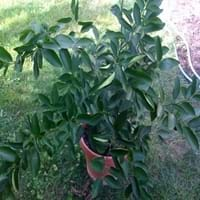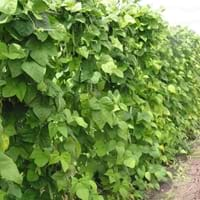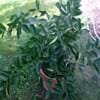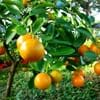Life Span
Perennial
Annual
Origin
Southern Asia, India, Melanesia, Australia
Central America, South America
Types
Shiraz Limoo,Tahiti lime , Bearss lime
Black turtle
Cranberry
Flageolet
Kidney
Pea
Pinto
White
Number of Varieties
Not Available
Habitat
Warm soil, Warmer regions
Mixed deciduous forest, Well Drained
USDA Hardiness Zone
9-11
Not Available
AHS Heat Zone
12-9
Not Available
Sunset Zone
H1, H2, 8, 9, 12, 13, 14, 15, 16, 17, 18, 19, 20, 21, 22, 23, 24
A1, A2, A3, H1, H2, 1a, 1b, 2a, 2b, 3a, 3b, 4, 5, 6, 7, 8, 9, 10, 11, 12, 13, 14, 15, 16, 17, 18, 19, 20, 21, 22, 23, 24
Habit
Oval or Rounded
Cushion/Mound-forming
Flower Color
White, Purple
Pink
Flower Color Modifier
Bicolor
Bicolor
Fruit Color
Yellow, Green
Green
Leaf Color in Spring
Green, Dark Green
Green
Leaf Color in Summer
Green, Dark Green
Green
Leaf Color in Fall
Green, Dark Green
Green
Leaf Color in Winter
Light Green
Green
Leaf Shape
Lance shaped
Acuminate
Plant Season
Spring, Summer, Fall, Winter
Spring, Summer, Fall
Sunlight
Full Sun, Partial Sun
Full Sun
Type of Soil
Clay, Loam, Sand
Loam, Sand
The pH of Soil
Acidic, Neutral, Alkaline
Neutral, Alkaline
Soil Drainage
Well drained
Well drained
Bloom Time
Indeterminate
Indeterminate
Tolerances
Drought
Drought
Where to Plant?
Ground, Pot
Ground
How to Plant?
Grafting, Layering
Seedlings
Plant Maintenance
Medium
Medium
Watering Requirements
Do Not over Water
Get enough water whenever the soil is dry, Keep ground moist
In Summer
Lots of watering
Lots of watering
In Spring
Moderate
Moderate
In Winter
Average Water
Average Water
Soil pH
Acidic, Neutral, Alkaline
Neutral, Alkaline
Soil Type
Clay, Loam, Sand
Loam, Sand
Soil Drainage Capacity
Well drained
Well drained
Sun Exposure
Full Sun, Partial Sun
Full Sun
Pruning
Remove damaged leaves, Remove dead branches, Remove dead leaves
Remove damaged leaves, Remove dead branches, Remove dead leaves
Fertilizers
All-Purpose Liquid Fertilizer
All-Purpose Liquid Fertilizer
Pests and Diseases
Mites
Alternaria leaf blight, Red blotch
Plant Tolerance
Drought
Drought
Flower Petal Number
Single
Single
Fragrant Bark/Stem
Yes
No
Foliage Texture
Medium
Coarse
Foliage Sheen
Glossy
Matte
Attracts
Birds, Butterflies
Not Available
Allergy
Skin rash
Legume allergy
Aesthetic Uses
Not Available
Not Used For Aesthetic Purpose
Beauty Benefits
Not Available
Not Available
Environmental Uses
Air purification
Air purification
Medicinal Uses
Antibacterial, Astringent, Carminative, Refrigerant
Nutritive
Part of Plant Used
Fruits
Seeds
Other Uses
Cleanser, Repellent
Used as a dye, Used in biomass
Used As Indoor Plant
No
No
Used As Outdoor Plant
Yes
Yes
Garden Design
Container, Edible, Feature Plant, Fruit / Fruit Tree, Houseplant, Shade Trees, Topiary / Bonsai / Espalier, Tropical
Edible, Herb, Vegetable
Botanical Name
CITRUS latifolia
PHASEOLUS vulgaris 'Black Valentine'
Common Name
Persian Lime
string bean
field bean
flageolet bean
French bean
garden bean
green bean
haricot bean
pop bean
In Hindi
Persian lime
Bush Bean
In German
Gewöhnliche Limette
Buschbohne
In French
Citrus × latifolia
Bush Bean
In Spanish
Citrus latifolia
Bush haba
In Greek
Persian lime
Μπους φασολιών
In Portuguese
Citrus × latifolia
feijão de Vagem
In Polish
Persian lime
Bush Bean
In Latin
Persian lime
Bush Bean,
Phylum
Vascular plant
Tracheophyta
Class
Magnoliopsida
Magnoliopsida
Clade
Angiosperms, Eudicots, Rosids
Angiosperms, Eudicots, Rosids
Tribe
Not Available
Phaseoleae
Subfamily
Not Available
Faboideae
Number of Species
Not Available
Importance of Persian Lime and Bush Bean
Want to have the most appropriate plant for your garden? You might want to know the importance of Persian Lime and Bush Bean. Basically, these two plants vary in many aspects. Compare Persian Lime and Bush Bean as they differ in many characteristics such as their life, care, benefits, facts, etc. Every gardener must at least have the slightest clue about the plants he wants to plant in his garden. Compare their benefits, which differ in many ways like facts and uses. The medicinal use of Persian Lime is Antibacterial, Astringent, Carminative and Refrigerant whereas of Bush Bean is Nutritive. Persian Lime has beauty benefits as follows: Not Available while Bush Bean has beauty benefits as follows: Not Available.
Compare Facts of Persian Lime vs Bush Bean
How to choose the best garden plant for your garden depending upon its facts? Here garden plant comparison will help you to solve this query. Compare the facts of Persian Lime vs Bush Bean and know which one to choose. As garden plants have benefits and other uses, allergy is also a major drawback of plants for some people. Allergic reactions of Persian Lime are Skin rash whereas of Bush Bean have Legume allergy respectively. Having a fruit bearing plant in your garden can be a plus point of your garden. Persian Lime has showy fruits and Bush Bean has no showy fruits. Also Persian Lime is not flowering and Bush Bean is not flowering . You can compare Persian Lime and Bush Bean facts and facts of other plants too.





